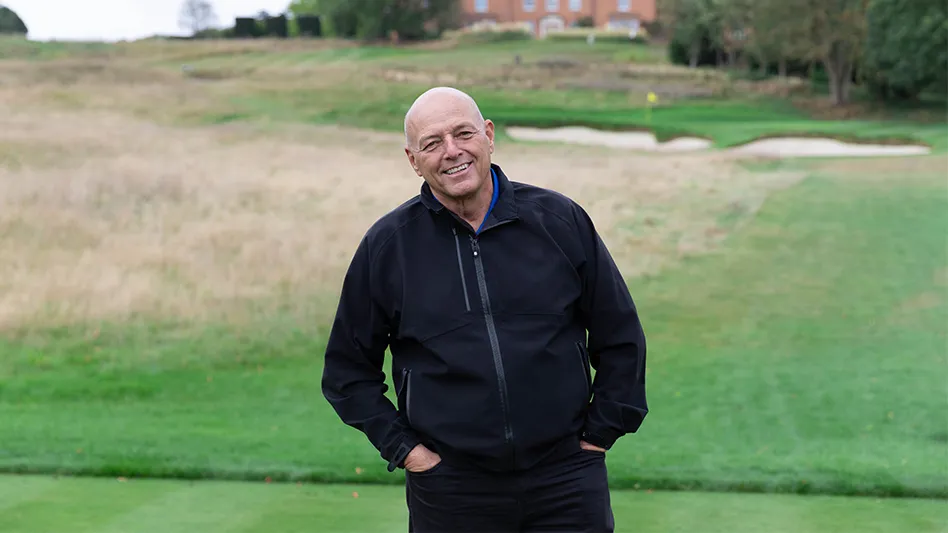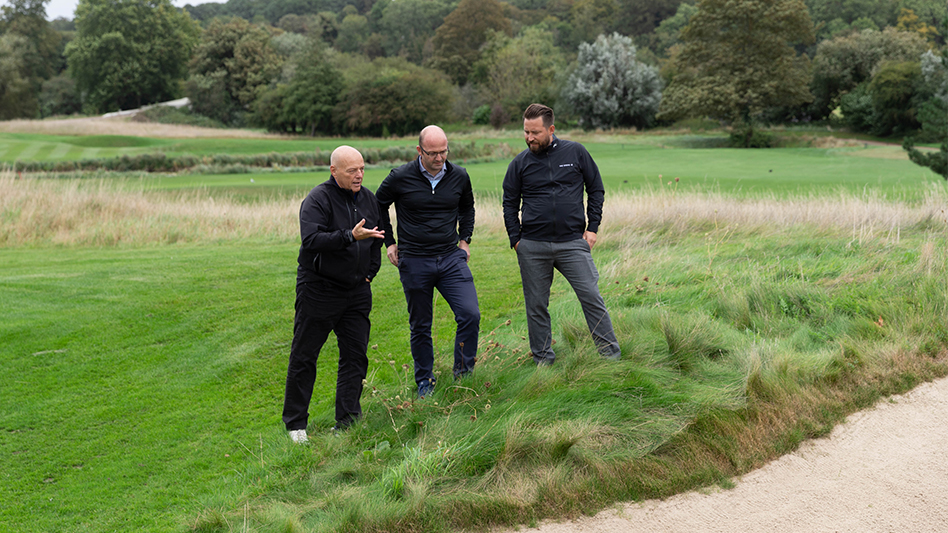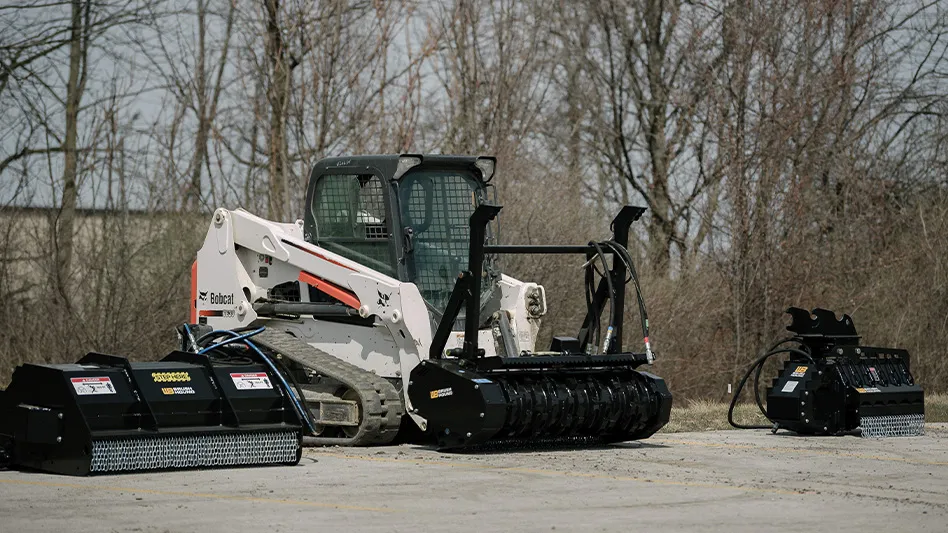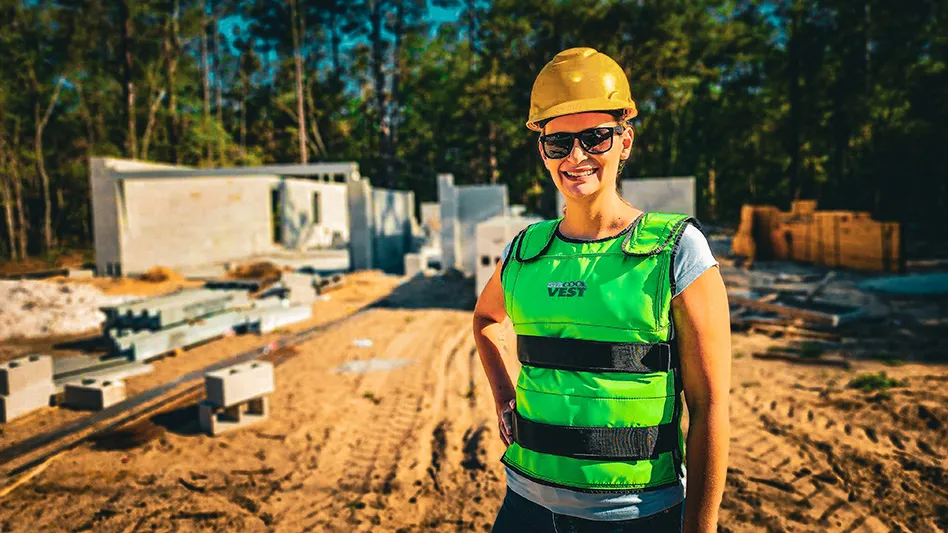
Courtesy of Kyle Phillips (2)
The golf course at The Grove officially opened in September 2003. Why did you initially choose to partner with the resort to design the golf course, and what aspects of the project appealed to you the most?
Well, I was fortunate that they wanted to partner with me. At the time they reached out to me, they were going through the initial planning consents with a layout from another American golf design firm and I was working on the construction of Kingsbarns, as well as two other course designs in Europe.
On our initial call, they explained that on the advice of their golf advisors, they were looking for a second opinion. The site was well situated and had all the elements needed to deliver a quality result. Having primarily designed courses in Europe, I had designed on sites with similar constraints and understood the importance of working with the natural landforms, as well as designing a walkable course.
My initial design concept was well-received and I was commissioned for the full design.
Building a world-class golf course is a complex process. Will you walk us through some of the key steps and challenges you faced during the initial construction of the course here at The Grove?
There were quite a few constraints that needed to be respected. The owners and the entire team of consultants took on board these constraints and used them as opportunities to bring the history of the old estate back to life and incorporate them into The Grove experience.
These constraints included historic preservation items, such as view sheds, horse paths, protected trees, and old structures, as well as archaeological preservation items. We worked hard to preserve the significant old trees and restore a number of the Humphrey Repton landscape features. All of these items needed to be factored into the layout of the course before we could finalize our design and commence construction.
Finding uninterrupted runs of usable land at the scale needed for golf and still maintain short walking distances from green to the next tee was tricky. I’m always up for a challenge and that was really a challenge on this property. Even with these significant limitations within the 300-acre estate, the golf course does not feel compromised and has good width between the holes.
How has the course evolved since it first opened? Have there been any major layout changes or features added?
The course is very much as it was 20 years ago. There’s been the two big professional events here and for those events the fairways were narrowed up a bit. Just going around the golf course today, we are discussing all the things that you would expect for a course of this age. We are having conversations centered around things such as purity of the turfgrass in general, particularly all the little battles you have in maintaining pure strands of fescue. All in all, the course has really held up well.
The Grove is celebrating its 20th anniversary this month. Will you reflect on the journey of The Grove and the impact you believe it has had on the world of golf over the past two decades, and the experience it offers guests?
The consistency of the ownership over 20 years has really served The Grove well. They are continually evaluating how to expand and improve The Grove experience in subtle but meaningful ways. From that standpoint, it’s nice have the same quality-oriented people involved at the birth of the course continue to be involved today. As it has grown and matured, that consistency in parenting has been really helpful to the success The Grove is enjoying now and as it should continue going forward.
How do you expect the golf course to develop and evolve over the next 20 years? And are there any future renovations or upgrades you’d like to make to the golf course to enhance its appeal or attract more high-profile events to the resort?
From a standpoint of the core business, I think the golf course today still fits the market beautifully. There are always conversations about guest experience, how the course is maturing, practice facilities and so forth. Within the context of what we were able to do, like I mentioned, with all the historic preservation, I think we really made good use of the property and created a great golf experience that will stand the test of time.
When it comes to the professional side of things, I expect 20 years later they will be hitting the ball even longer than today. With this in mind, we may want to see where we can we slide in some back tees, or slip a few things in here and there, to maintain an appropriate challenge for the world’s top players.
You’ve designed golf courses all around the world that have gone on to host high-profile events. How proud were you to see The Grove host the WGC American Express in 2006 and the British Masters in 2016?
It's always nice when your work is tested by the pros. It was particularly nice to see The Grove have this opportunity so early on. Where some are really driven to host a professional event, The Grove owners were focused from the start on getting the golf course design and overall quality right for their core business. For professional organizers to want such events here because of the quality of the golf course and all that The Grove has to offer is a tribute to what was realized here. I was really happy to see the course hold up against the world’s best players.

Hosting these types of events often requires specific considerations when designing a course. Will you elaborate on what makes the layout at The Grove able to accommodate events like the WGC and the British Masters?
I think we did a good job using some of the things that were constraints to actually work in our favor for having big events here.
For example, that area of open land at the right of the tournament 18th (normally the 9th hole), provided a great grandstand and hospitality space during the events. Then there were certain old trees that created gaps and triangles between the holes that also work beautifully for tournaments. Even the natural rolling terrain creates natural spectator viewing points without having to have erect grandstands. Locationally, being so near the M25 gives the ability to bring services in from the back entrance and the front entrance.
It has all of those kinds of things you need in order to host the large number of spectators, corporate sponsors and media for big professional tournaments. The Grove has the scale to accommodate any event imaginable, even to the extreme of Ryder Cup-size crowds. There are not very many places that have this kind of feeling of being in a country estate but also right on the doorstep of an international airport, major roadway and train access.
Tiger Woods famously eagled the 18th (normally the 9th) in three of his four rounds in 2006 to win his sixth consecutive PGA Tour Strokeplay event. How did you feel at the time when he achieved this?
If everyone was eagling the hole, then you’d probably say this should be a par 4, but that was not the case. There were a number of pin positions that were really tough and one in particular back left on 18 where the green’s falling away slightly. It really was just that fine line between the world’s very best players who were able to negotiate the hole. But look, Tiger was at the top of his game.
I mean, one day Tiger sank a putt across the green to make the eagle, so it wasn’t as though every shot was hit on line. Also, he made an amazing shot, from where the plaque is now located. His level of play, his ability to recover, at that period when he was arguably the world’s greatest player … He was at the peak of his game, so it was fun to watch.
He loved the course when he came out to play it for the first time. Afterward, he was genuinely enthusiastic about the golf course. There was something about the golf course that “suited his eye” and led him to compare The Grove to his favorite courses in the world.
It definitely suited Tiger’s eye and, of course, Ian Poulter was in second place. Even though there was a considerable gap, when it was all done, you had the best of the best at that time come out on top and that’s what you always like to see.
As a world-renowned golf course architect, what are the key factors or principles you believe are essential to consider when designing a golf course to make it truly exceptional?
Well, the key factors if you are starting from square one: you must have water, or the accessibility to water, plus soils that you can grow in, and an owner who is committed to quality. Today, even in places where they must desalinize for drinking water, such as the Middle East or the Caribbean, it is often efficiently recycled and used for golf and other recreation. If you don’t have a water source, you don’t have viable project.
Also, it is always great when you have perfect contours for golf, but sometimes that is not the case. When folks understand what we are capable of doing and how we have transformed sites such as Kingsbarns, it inspires them and helps them imagine what could be possible on their land. The Grove is an example of good land. In terms of contours, there were some areas that were a little more dramatic than others. Most of the site has well-draining gravelly soils below. Even down by the river, there was good quality topsoil soil and overall well-draining soil.
What advice would you give to aspiring golf course architects?
For those in university now studying to gain access into the profession, know that it is a very small and competitive business. Look for a full scope of design apprentice opportunity, as there are not many people out there with this type of design experience. When I came through, I was fortunate to work for an international firm that provided full scope of design services, including routing layout, construction bid documents and construction services, as well as the shaping and supervision. We continue to provide that same full scope of services on a wide range of sites around the globe today. Our process allows us to take on both natural and challenging properties and achieve world-class results.
Unfortunately, that kind of training seems to have almost vanished when the number of new golf development declined and most of the work became focused around remodelling. Even today, there aren’t as many new builds as there were at the height of golf development in the ’90s and the early part of this century. As a result, I find many aspiring architects out there today only have experience working on an excavator, or perhaps some limited bulldozer experience.
How long does the process take as an apprentice?
Before starting my own design business, I spent 16 years with Trent Jones Jr.’s office in Palo Alto, California, and ended up working primarily on our designs in Europe. I also worked on Mr. Jones, Sr. design contracts when he was nearing the end of his career.
How long you need in terms of experience probably depends on the opportunities you get and your ability to visualize three-dimensionally. In golf course design, we work at a large scale and often on big sites that can have strong topography and lots of vegetation. In both the initial design and the golf course grading, you really need to have an ability to visualize the landforms well from a topography map. This way, we don’t need to make big adjustments during construction and can focus on the many details and nuances of the design, which allows us to achieve a better result.
I have concluded that to be a great designer there is something spatially that you have or you don’t. Usually, people tend to know this early on and they’ll gravitate toward design — even art- or engineering-related studies. For others, it becomes kind of an acquired thing that they learn about and, with training, can have a certain level of success. Regardless, it’s a continual learning process.
Latest from Golf Course Industry
- Devising safer landings
- SiteOne adds Durentis to product offerings
- Resilia available for purchase in Hawaii
- What can $1 million do for expanding the industry workforce?
- Captivating short course debuts on Captiva Island
- Wonderful Women of Golf 35: Carol Turner
- The Andersons acquires Reed & Perrine Sales
- Excel Leadership Program awards six new graduates





